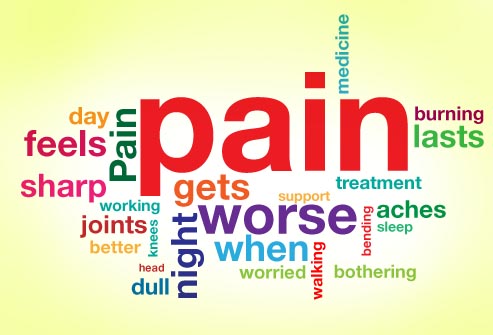Working in a rehabilitation centre means that you have to deal with pain every day. Actually, it is quite frank to notice that someone’s pain is an everyday part of my job. And because it is such a ‘normal’ thing in my job, I thought it was time to reflect on what types of pain we encounter in a week working as a physiotherapist.
In our rehabilitation centre, about 60 persons stay for a period of maximum 3 months, in order to regain enough functional capacities to return home. People can have various medical conditions, varying from a new hip or knee, amputation, general or orthopedic surgery, cancer-related medical problems and fractures. Next to this, there is a special unit for neurological disorders (e.g. stroke, subarachnoidal bleeding) and for heart/lung problems.
So, as you can suspect, with such a broad spectrum of conditions, our team encounters a new situation every day. And because every person is unique it asks a lot of adjustment to create an optimal recovery climate for every individual. We encounter so much different types of pain that I give a small list of what I noticed last week: post-surgical pain, amputation pain, headache, emotional pain (for example persons who have to deal with a great loss), neuropathic pain, chronic pain, shoulder/arm pain in stroke.

+ What is pain?
The most often used definition of pain is the one stated by IASP (International Association for the study of pain) : "Pain is an unpleasant sensory and emotional experience associated with actual or potential tissue damage, or described in terms of such damage."
Nobody likes to have pain, so for most people pain relief is one of their goals. But as you saw the diversity in the types of pain I described; it is for sure that it’s not fixed just with ‘a spoonful of sugar’ as Mary Poppins did.
+ What means pain?
For me, it has become very clear that every person responds differently to his/her pain. The meaning of pain is therefore hard to explain on paper (see blogpost: http://www.paininmotion.be/blog/detail/pain-attention-important-interaction ;http://www.paininmotion.be/blog/detail/patient-pain-central-not-therapist)
Though, I think that as a physical therapist it is our task to educate patients about how they can manage their pain and discomfort themselves. Specific conditions are required: e.g. an adequate pain management system: especially after surgery or in case of fractures, the physician, nurse and patient need to monitor the pain, level of activity and necessary medication. The WHO (World Health Organization) analgesic pain-ladder is used in this, because most of the patients we see deal with acute pain. We as a physical therapist are also relevant in this: we (together with the patient) set the level of activity. We stimulate patients to reach their own goals. Coping is central in this; some persons keep on going, while for others it is hard to even start moving. If we notice a deficit in coping strategy or pain is of more chronic nature, the psychologist is joining the treatment, and we try to encounter the patients network in this.
+ How do we talk about pain?
Because each person is different, and everyone has their own goals, we start every treatment with setting a plan for action. We use the Visual Analogue Scale (VAS) or Numerical Rating Scale (NRS) frequently (and it helps that most patients are already trained to use it in the hospital). Also questionnaires are used, such as the Pain Catastrophizing Scale (PCS), Central Sensitization Inventory (CSI) or Utrechtse Coping Lijst (UCL). But next to this, having a talk and attention for the pain is also from great value. In here, a balance needs to be found between attention for pain, just enough to understand their pain, transferring knowledge about the mechanism and function of pain, and making a translation to the individual situation of the patient.
And then giving the patient a choice: what do you do? Not solving the problem for him/her, but giving them tools to manage it themselves. That makes that a goal is reached and patient is involved in shared decision-making. Never said it’s easy, but in the end I can enjoy this process so much!
Have your say:
What do you prefer most in daily use with patients: the Visual Analogue Scale (VAS) or Numerical Rating Scale (NRS)?
Vote on: https://goo.gl/c7dbGs
Follow the results on: https://goo.gl/ZI03dv
Lisette Heystee
Physical /Manual Therapist & Health scientist, working in the Netherlands (Bergen op Zoom) in a rehabilitation centre focused on persons aged 50+ to return to their own home within several week after their hospital admittance.
2017 Pain in Motion
References and further reading:
https://www.ncbi.nlm.nih.gov/pubmed/460931